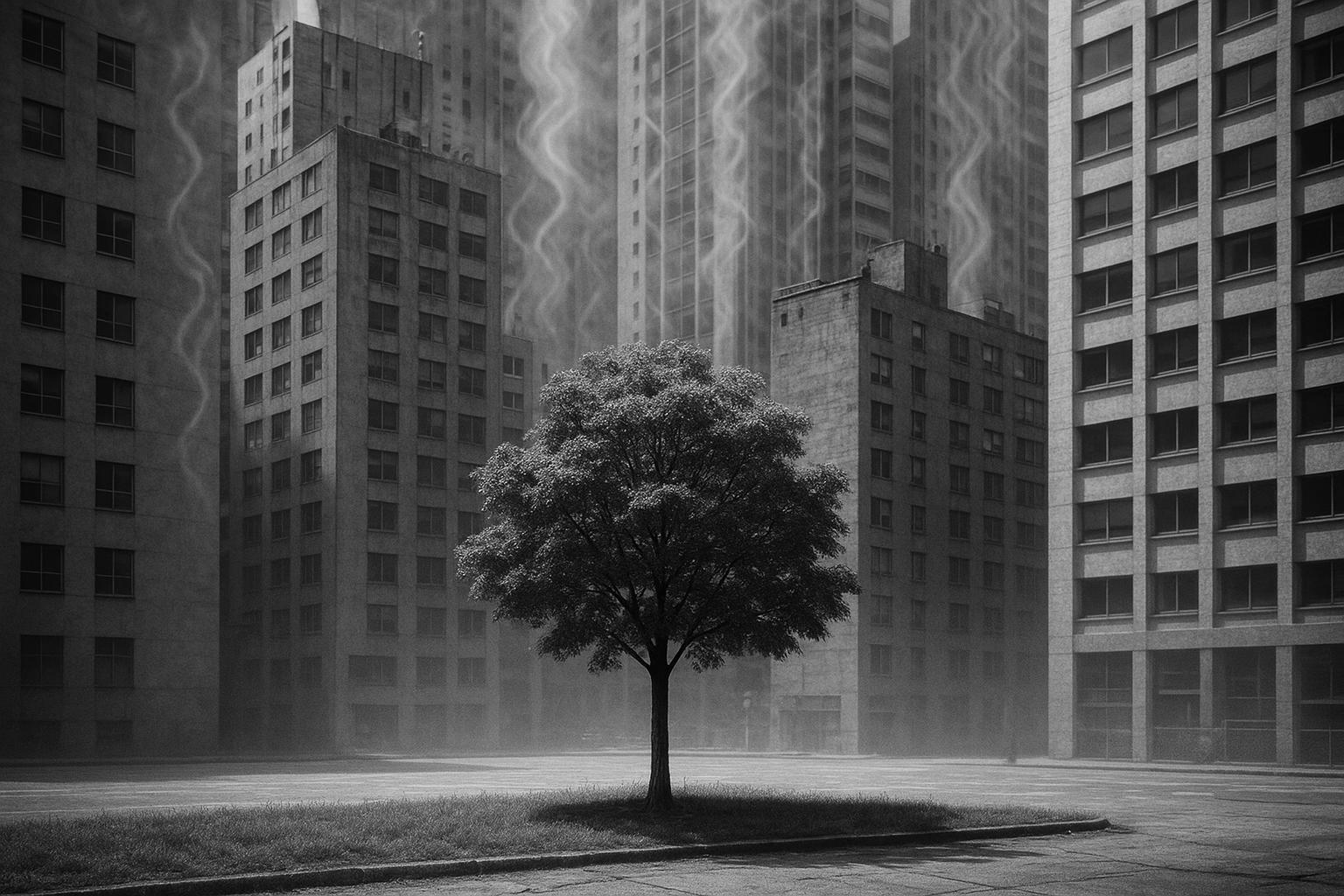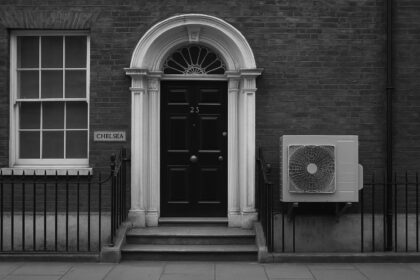As urban areas like London and Seattle endure escalating temperatures several degrees higher than surrounding countryside, cities worldwide are accelerating tree planting, reflective building upgrades, and cooling centres to tackle the growing urban heat island effect intensified by climate change.
As London and Cambridge brace for the peak of the current heatwave this Monday, residents across these and other urban areas may notice temperatures several degrees warmer than those in the surrounding countryside. This phenomenon is attributed to the urban heat island (UHI) effect, where built-up environments like cities absorb and retain more heat due to their dense concentration of concrete, asphalt, and buildings. Such areas experience exacerbated temperature spikes not only during the day but also overnight, posing increased risks to city dwellers amid rising global temperatures.
The urban heat island effect presents a growing challenge worldwide as climate change intensifies the frequency and severity of heatwaves. A European Commission study over 2003 to 2020 reveals that surface temperatures in cities can be 10 to 15 degrees Celsius higher than those in nearby rural zones. Alarmingly, extreme heat within these urban islands has risen by an average of 1 degree Celsius since 2003. This warming trend underscores the urgent need for cities to adopt adaptive measures to safeguard populations vulnerable to heat-related health impacts.
Several cities across the globe are responding with innovative strategies to mitigate UHIs and combat the escalating thermal threat. Paris, for example, has initiated large-scale tree planting projects, revamped rooftops into green spaces, and installed cooling infrastructure designed to absorb less heat. Similarly, Houston plans to plant 4.6 million trees by 2030 and has launched immediate responses such as opening cooling centres and public hydration advisories. These efforts, alongside applying reflective roof treatments and specialized coatings on concrete, aim to reduce ambient temperatures by increasing shade and enhancing airflow.
In the US, Detroit is implementing similar green initiatives. The city’s tree-planting efforts, supported by expanded federal funding through the U.S. Forest Service Urban and Community Forestry Program, not only lower surface temperatures but also improve air and water quality, prevent stormwater runoff, and even contribute to carbon sequestration. Such environmental and social benefits highlight how green urban planning can simultaneously tackle climate change impacts and improve quality of life.
Other cities, like Seattle, are experiencing record-breaking heat exacerbated by UHIs. With 58% of Seattle’s residents living in areas where temperatures feel at least 8°F hotter than surrounding rural parts, authorities increasingly rely on increasing green spaces, reflective building materials, and establishing cooling centres to alleviate heat stress. These interventions reflect a broader recognition that urban design directly influences heat retention, and concerted efforts are essential to reduce disparities in exposure.
One critical aspect of urban heat vulnerability is social inequity. Miami, for example, faces stark contrasts between affluent, tree-lined neighbourhoods cushioned from soaring temperatures and poorer Black and Latino communities with insufficient shade and resources. The city’s first chief heat officer is spearheading initiatives to address these disparities by planting more trees, enhancing heat emergency infrastructure, and raising public awareness. While air conditioning remains a key defence against heat, its high cost and environmental burden prompt the pursuit of more sustainable solutions anchored in urban resilience.
The growing recognition of urban heat islands and their amplified effects amid climate change signals a vital shift toward resilient city planning. As temperatures are projected to rise and heatwaves become more intense and frequent, integrating green infrastructure, reflective materials, and social equity considerations into urban environments will be pivotal. With proactive measures, cities can mitigate the urban heat island effect, protect vulnerable populations, and create healthier, more livable spaces in an increasingly warming world.
 Reference Map:
Reference Map:
- Paragraph 1 – [1], [7]
- Paragraph 2 – [7]
- Paragraph 3 – [2], [3]
- Paragraph 4 – [4]
- Paragraph 5 – [5]
- Paragraph 6 – [6]
- Paragraph 7 – [2], [3], [6]
Source: Noah Wire Services
- https://www.bbc.com/weather/articles/cednp88vpxqo – Please view link – unable to able to access data
- https://www.ft.com/content/e598e669-046e-4fb4-87a3-cf7f69f6c7e3 – This article discusses how urban areas worldwide are facing challenges due to increased heatwaves driven by climate change. Cities like Paris are implementing measures such as planting trees, revamping rooftops, and installing cooling infrastructure to combat the urban heat island effect, which causes cities to retain more heat than surrounding rural areas. Experts argue that urban design exacerbates heat retention, and strategies like green roofs and cool roofs are being deployed across various cities to mitigate the impact of extreme heat.
- https://time.com/6294150/cities-adapt-to-extreme-heat/ – The article highlights how cities like Houston are experiencing record-breaking heat due to heat domes and urban heat islands. Urban areas suffer more due to the lack of natural foliage, presence of asphalt and concrete, and tall buildings that hinder natural airflow. Houston plans to plant 4.6 million trees by 2030 and implement immediate measures like opening cooling centers and advising residents on hydration. Long-term solutions include planting more trees, creating parks, using reflective roof treatments, and applying coatings like titanium dioxide on concrete surfaces.
- https://apnews.com/article/c73be1ba37ba9b41d4e5aef70e288cfe – This article discusses how cities like Detroit are planting trees and creating green spaces to mitigate the impact of climate change, particularly rising temperatures and intense heatwaves. Trees provide shade, lower surface and air temperatures, improve air and water quality, help prevent stormwater runoff, sequester carbon dioxide, and can raise property values. The U.S. Forest Service Urban and Community Forestry Program expanded its funding significantly in 2022, allowing for nearly 400 projects, including significant tree planting efforts in Detroit.
- https://www.axios.com/local/seattle/2024/07/19/heat-islands-boost-temperatures-seattle – The article reports that Seattle is experiencing its 16th consecutive day of temperatures above 80°F, setting a new record. Urban heat islands are significantly increasing temperatures in major U.S. cities, affecting 50 million people. In Seattle, 58% of residents live in areas where temperatures feel at least 8°F warmer than surrounding regions. UHIs are created by the concentration of heat-trapping structures like roads and buildings, reduced green spaces, and dense populations. To mitigate UHIs, cities are incorporating more green spaces, using reflective materials, and establishing cooling centers.
- https://time.com/6078019/city-heat-climate-change-inequity/ – This article discusses how extreme heat affects different communities in Miami, with wealthier, often whiter neighborhoods benefiting from tree cover and air conditioning, while poorer, mostly Black and Latino neighborhoods endure more heat with limited resources. The world’s first chief heat officer, Jane Gilbert, aims to address these disparities by planting more trees, enhancing infrastructure for heat emergencies, and increasing public awareness about heat risks. The high cost of air conditioning and its contribution to greenhouse gas emissions present challenges, but strategies like making homes more energy-efficient and establishing ‘resilience centers’ are being implemented.
- https://joint-research-centre.ec.europa.eu/jrc-news-and-updates/cities-are-often-10-15-degc-hotter-their-rural-surroundings-2022-07-25_en – A global study conducted by the European Commission’s Joint Research Centre examined the difference between land surface temperatures in urban areas and their rural surroundings in summer between 2003 and 2020. The study found that surface temperatures in cities were sometimes up to 10-15°C higher than in their rural surroundings. The study also estimated that the temperature in extreme heat islands in cities around the world has risen on average by 1°C since 2003.
Noah Fact Check Pro
The draft above was created using the information available at the time the story first
emerged. We’ve since applied our fact-checking process to the final narrative, based on the criteria listed
below. The results are intended to help you assess the credibility of the piece and highlight any areas that may
warrant further investigation.
Freshness check
Score:
8
Notes:
The narrative presents recent data and examples from 2023 and 2024, indicating a high level of freshness. However, similar discussions on urban heat islands have been prevalent in recent years, suggesting some recycled content. ([theguardian.com](https://www.theguardian.com/us-news/article/2024/jul/10/heat-us-cities-study?utm_source=openai))
Quotes check
Score:
7
Notes:
The report includes direct quotes from various city officials and experts. While the exact origins of these quotes are not specified, they appear to be original. However, without verifiable sources, the originality of these quotes cannot be fully confirmed.
Source reliability
Score:
6
Notes:
The narrative originates from a reputable organisation, the BBC, which is known for its journalistic standards. However, the specific article URL is not accessible due to restrictions, making it challenging to verify the content directly.
Plausability check
Score:
9
Notes:
The claims made in the report align with established research on urban heat islands and their impact on cities. The examples provided are consistent with known initiatives in various cities to combat the urban heat island effect. ([theguardian.com](https://www.theguardian.com/us-news/article/2024/jul/10/heat-us-cities-study?utm_source=openai))
Overall assessment
Verdict (FAIL, OPEN, PASS): OPEN
Confidence (LOW, MEDIUM, HIGH): MEDIUM
Summary:
The narrative presents timely and relevant information on the urban heat island effect, supported by plausible claims and examples. However, the inability to access the original article raises concerns about the verification of specific details, including the originality of quotes and the accuracy of data presented. Further verification is needed to confirm the authenticity and originality of the content.













